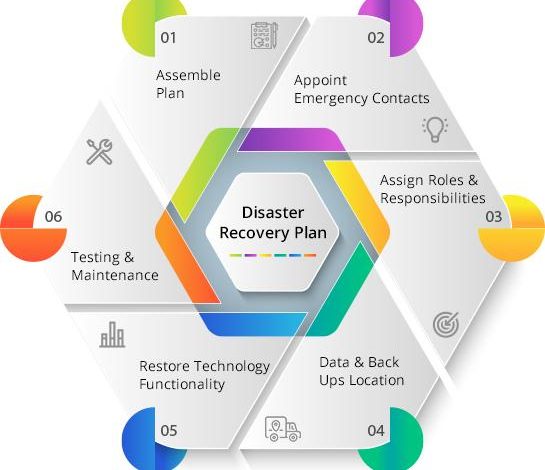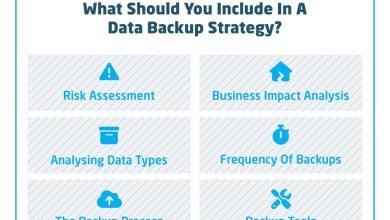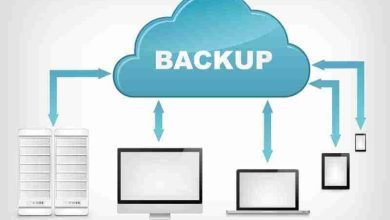How to Develop an Effective Disaster Recovery Plan

How to Develop an Effective Disaster Recovery Plan
In today’s unpredictable world, having a robust disaster recovery plan is essential for businesses of all sizes. A well-structured disaster recovery plan ensures that your organization can quickly bounce back from unexpected disruptions, minimizing losses and maintaining operational continuity. In this thorough guide, we will outline steps to develop an effective disaster recovery plan, discuss its benefits, and share practical tips and real-life case studies.
What is a Disaster Recovery Plan?
A disaster recovery plan (DRP) is a documented, structured approach that describes how an organization can quickly resume work after an unplanned incident. Such incidents could range from a natural disaster, cyber-attack, equipment failure, or even simple human error.
Key Components of a Disaster Recovery Plan
- Risk Assessment: Identify potential threats and vulnerabilities.
- Business Impact Analysis: Determine the effects of disruptions on business operations.
- Recovery Strategies: Develop strategies for maintaining and restoring business functions.
- Plan Growth: Document the procedures to follow during and after a disruption.
- Testing and Maintenance: Regularly test the plan and update it as necessary.
Steps to Develop an Effective Disaster Recovery Plan
1. Conduct a Risk Assessment
Identify the various risks that could potentially disrupt business operations.This includes natural disasters, technical failures, and human risks. Assess the likelihood and severity of thes risks.
2. Perform a Business Impact Analysis
Evaluate wich business functions are critical and what the impact would be if these functions were disrupted. This analysis helps prioritize recovery efforts.
3. Develop Recovery Strategies
Based on the risks and impact analysis, create strategies tailored to specific threats. Consider data backups, alternative locations, and resources necessary for recovery. Make sure to cover:
- Data Backup Procedures: Implement regular data backups using cloud storage or physical media.
- Alternative Work locations: Identify other facilities for employees to work in case of an office outage.
- Interaction Plans: Establish guidelines for informing employees, customers, and stakeholders of any disruptions.
4. Document Your Plan
Your disaster recovery plan should be detailed and clear.It should include:
- Contact information for key personnel.
- An inventory of hardware, software, and data assets.
- Step-by-step recovery procedures.
- Resources needed for recovery.
5. Train Your Team
Ensure your team understands the disaster recovery plan. Conduct training sessions and create mock disaster scenarios to test their readiness.
6. Test the Plan Regularly
Testing ensures your plan is operational and effective. Here are some popular testing methods:
- Tabletop exercises: Discuss the steps of the plan in a group setting.
- Simulation Tests: Run a simulation of a disaster to understand how well your team responds.
- Full Interruption Tests: Conduct a complete shut down and follow the recovery protocols.
7. Review and Revise
Disaster recovery is not a one-time task. Regularly review and update the DRP to reflect changes in technology, business objectives, and personnel.
Benefits of an Effective Disaster Recovery Plan
investing resources into a disaster recovery plan can seem daunting, but the benefits far outweigh the costs.
- Enhanced Resilience: an effective DRP increases your organization’s ability to respond to disruptions swiftly.
- Minimized Downtime: Having a plan in place reduces the time it takes to recover and resume normal operations.
- Improved Customer Confidence: Clients are more likely to trust businesses that have a solid plan for maintaining their services.
- Compliance Mandates: Certain industries have regulations that require a disaster recovery plan, ensuring your business remains compliant.
Practical Tips for an Effective Disaster Recovery Plan
1. Involve Key Stakeholders
Include representatives from different departments in your planning process to ensure every aspect of the business is addressed.
2. Keep It Simple
Ensure that your plan is straightforward and easy to understand. Avoid jargon and technical terms.
3. Utilize Technology
Explore tools and software designed to enhance disaster recovery planning and maintain your data security.
4. Communicate regularly
Regular updates and communication about changes to the plan will keep everyone informed and ready.
Case Studies and Real-Life Experiences
Case Study: XYZ Corporation
XYZ Corporation experienced a cyber-attack that brought their operations to a halt. Though, as thay had an up-to-date disaster recovery plan, they were able to restore their systems in just a few hours. They had regularly trained their staff on recovery procedures and maintained backups that were stored offsite, allowing them to recover critical data swiftly.
Case Study: ABC Manufacturing
ABC Manufacturing faced notable disruption when a natural disaster struck their primary facility. Their well-documented disaster recovery plan included a secondary site for operations, which allowed them to resume production within a week. Their proactive investment in a DRP helped prevent a total loss of revenue during the recovery period.
Conclusion
Developing an effective disaster recovery plan is crucial for ensuring your organization’s resilience in the face of unexpected disruptions. By following the steps outlined in this guide—conducting risk assessments, preparing a business impact analysis, developing recovery strategies, and continually testing and revising your plan—you can safeguard your business against potential threats.
Remember, a well-crafted disaster recovery plan not only protects your operations but also builds trust with your clients and stakeholders. Don’t wait for a disaster to strike; start developing your disaster recovery plan today and secure your business’s future.



